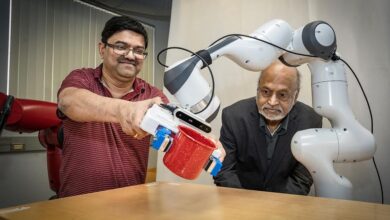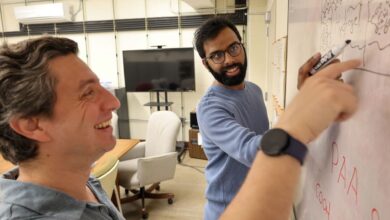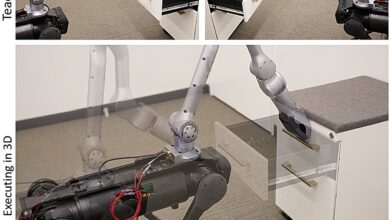Robotics could be used to diagnose and remove lung cancer in patients in one sitting, medics says | UK News

A team at the Royal Brompton Hospital has said it is getting “generally good results” after carrying out the procedure on seven patients.
Robotics could be used to diagnose and remove lung cancer in one sitting in a move that would be “transformational” for patients and NHS waiting lists, according to medics trialling the technology.
Professor Pallav Shah, a consultant respiratory physician based at Royal Brompton Hospital in London, said his team is “generally getting good results” after testing the procedure on seven patients.
One of them was a woman who was unable to have more radiotherapy as part of her treatment.
The method using robotics allows doctors to target and remove nodules on the lung with millimetre precision.
Before the procedure, a CT scan is performed and passed through software to create a detailed 3D roadmap of the inside of the patient’s lungs from the mouth to the location of the cancer.
A thin, robot-guided tube, or catheter, is then passed through the patient’s mouth and into the airways.
Once located, cancer cells are destroyed using heat in a process known as microwave ablation.
Professor Shah said: “We can get to the nodule really precisely.
“The first patient we treated was quite interesting – she had already had lung cancer and chemotherapy and radiotherapy, but then developed a spot in the radiation field.
“She couldn’t have more radiotherapy and wasn’t eligible for surgery. We had to be millimetre precise – and we were. She’s now – over six months down the road – doing really well.”
The team has treated a further six patients since then.
Professor Shah added: “Generally we’re getting good results, but it’s just early days.”
Current ablation treatments involve performing a CT scan on a patient to locate the cancer and inserting a needle through the skin and straight into the tumour to destroy it.
This can involve multiple attempts, taking “well over an hour, maybe 90 minutes”, according to Professor Shah, and carries a risk of puncturing the lung.
The procedure being trialled by Professor Shah and his team takes between 40 and 45 minutes, although the stage where the cancer is destroyed with heat only takes three minutes.
Navigational bronchoscopy – when a narrow tube is passed through the mouth into the airways, allowing doctors to examine nodules – is successful in identifying lung cancer about 65% of the time, according to Professor Shah.
However, introducing robotics increases the success rate “dramatically”, bringing it “close to 95%”, he added.
He has said there is “a lot of work to be done, but a lot of early promise” and in the future, he would like to see diagnosis and treatment of lung cancer in the same sitting.
Read more:
‘Groundbreaking’ lung cancer vaccine being developed
The ‘lung MOT’ scan trucks helping to diagnose cancer
Some smokers to be offered free lung cancer screenings
A current trial is aiming to treat 32 lung cancer patients who are not fit or eligible for surgery to determine the safety of the procedure and the recurrence rate of cancer.
The next step will be a trial that uses the method on patients who are eligible for surgery.
One of the biggest comparisons of the new method’s safety will be radiotherapy, which works by using radiation to kill cancer cells but has a number of side effects.
One such side effect is pneumonitis – or inflammation of the lung – which Professor Shah said can be “very unpredictable and can lead to profound damage and breathlessness”.
According to the NHS, more than 43,000 people each year are diagnosed with lung cancer in the UK. Smoking is the most common cause, accounting for about 70% of cases.
The disease is more likely to be treated successfully if caught early.



